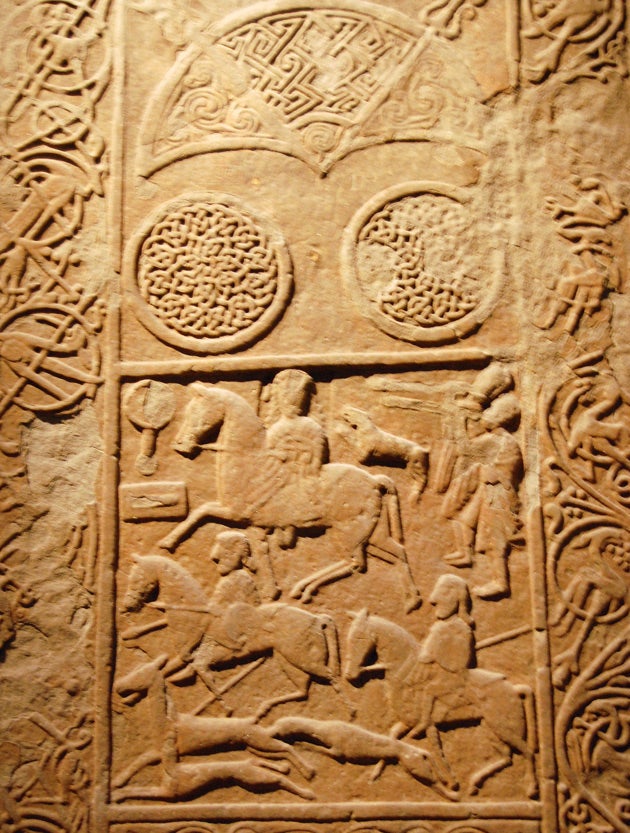Pictish symbols represent ancient written Scottish language

New research has shown that the symbols used by the ancient Picts, who lived in Scotland from AD 300-843, were an actual written language, rather than just symbology.
What historians know of the Picts has so far been gleaned from the artefacts they left behind and via the writings of the people whom they had contact with, such as the Romans. But if the meaning of inscribed patterns and symbols on Pictish stones and slabs can be deciphered, the potential to learn more about ancient Scotland could be immense.
There are only a few hundred surviving Pictish stones and slabs. Some of them have symbols carved onto them like a relief. Christian motifs, such as a cross, can also be seen on a number of them. There are also several painted pebbles, whose patterns seem particularly perfunctory. Researchers have long grappled with the question of what they represent. Are they mere symbols? Or are they full-fledged texts (albeit un-deciphered) which communicate a written language?
This particular debate is common among scholars trying to unravel ancient symbols. The Indus Valley Script, used in South Asia 4,000 years ago, is another example of an un-deciphered script that could be either symbols or language, and it was recently proposed that eggshells discovered in Africa could also demonstrate an unknown early language.
A team of language experts, led by Professor Rob Lee of Exeter University, analysed how random the Pictish symbols are. If the symbols didn’t show evidence of any kind of order, then it would be unlikely that they represented a written language, but if the same symbols are being written in the same way over and over again, then there is a good chance that it does communicate written language.
Measuring the amount of randomness in an un-deciphered script is difficult because there are usually a limited number of examples (only a few hundred for the Pictish language) and quite often these haven’t been compiled together and published. This means that researchers have to work with small datasets, making this analysis tricky.
Working with the symbols available to them, the team was able to determine that there is some predictability in the Pictish symbols, enough so that it seems likely to be a written script. “It is extremely unlikely that the observed values for the Pictish stones would occur by chance,” the researchers said in a paper published recently in the journal Proceedings of the Royal Society.
The next step is to expand their dataset and get a record of every Pictish symbol ever recorded. Researchers can then hone in on the language and, hopefully, decipher it.
“Demonstrating that the Pictish symbols are writing, with the symbols probably corresponding to words, opens a unique line of further research for historians and linguists investigating the Picts and how they viewed themselves,” said the team.
No doubt scholars will be hoping to discover a Scottish version of the Rosetta Stone or the Behistun Inscriptions to help decipher the language. If the Pictish code can be cracked, we could be about to learn a lot more about the ancient people of Scotland, and open up our understanding of ancient Britain.
Lost Languages: The Enigma of the World's Undeciphered Scripts
Join our commenting forum
Join thought-provoking conversations, follow other Independent readers and see their replies
0Comments